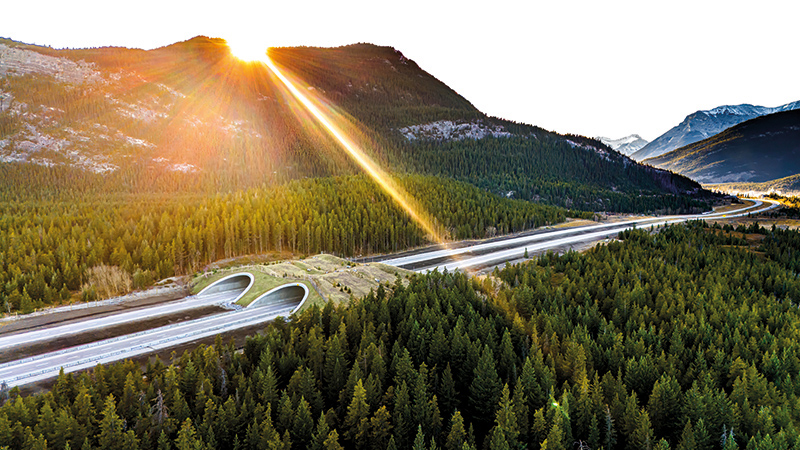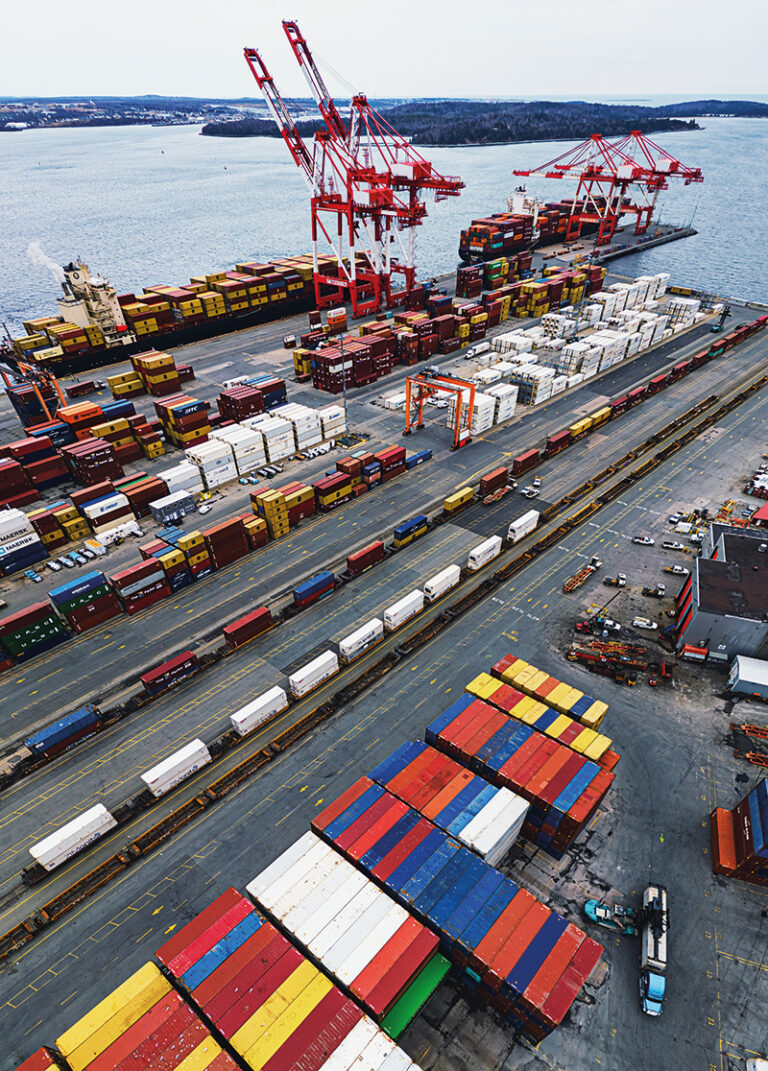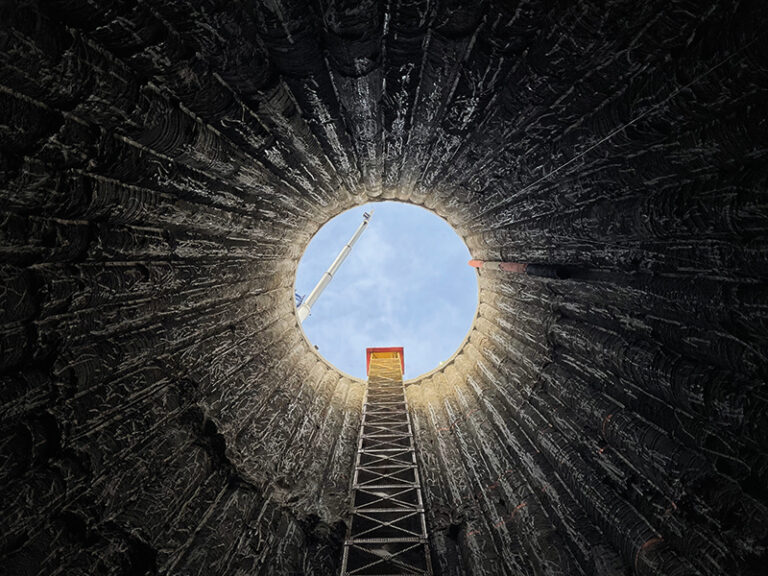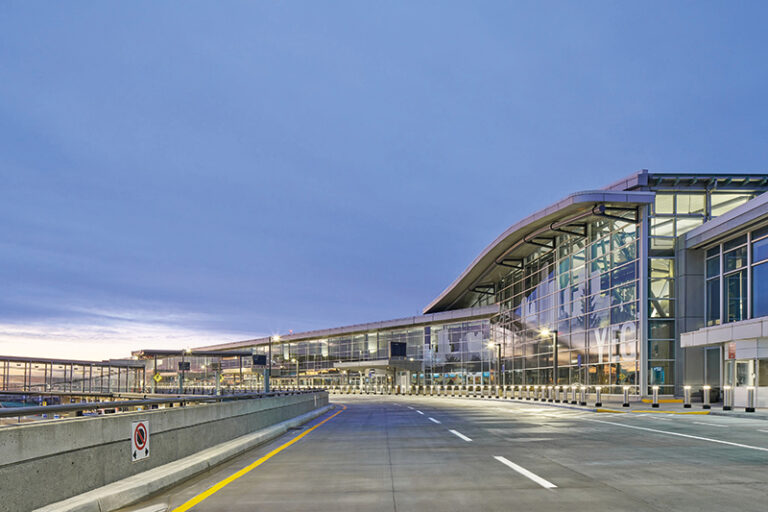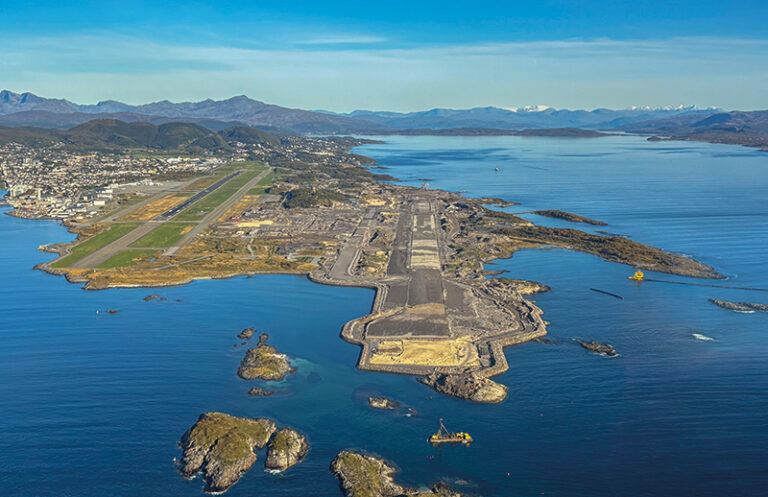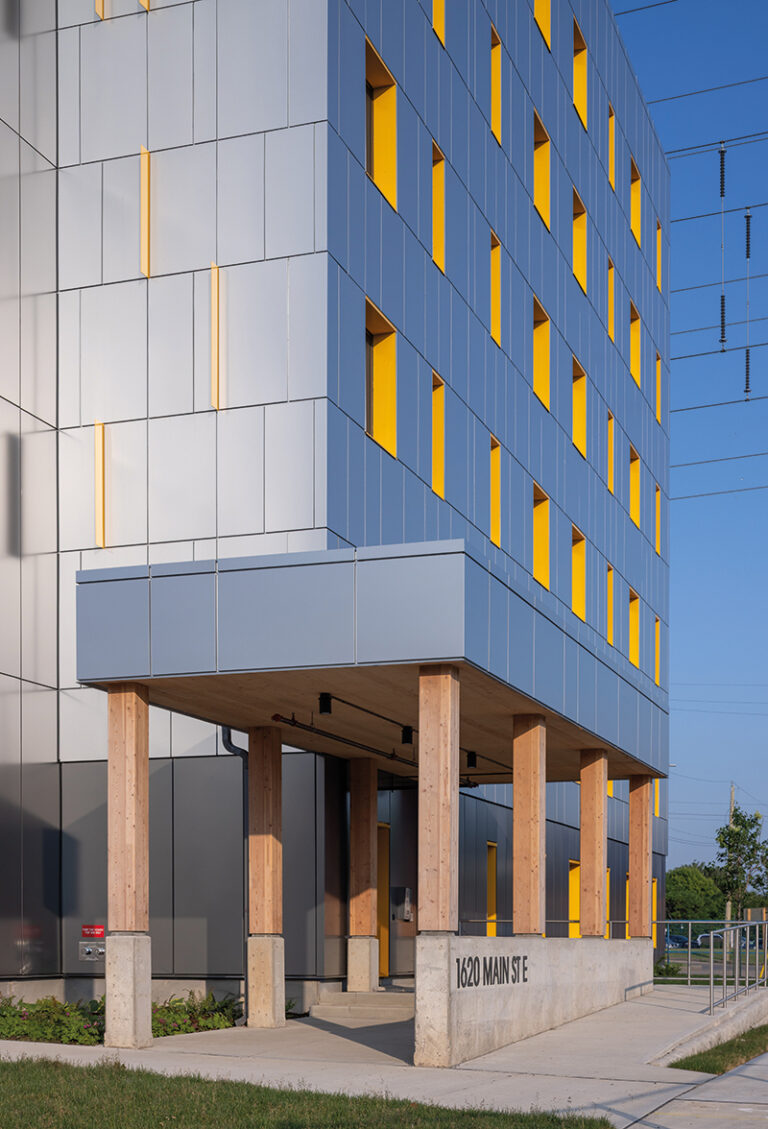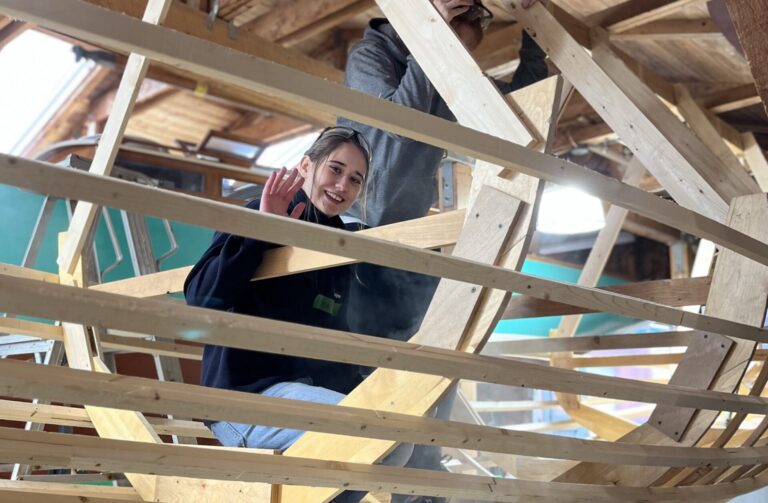By David McPherson
In Canada, a wildlife-vehicle collision occurs every 38 minutes. The associated costs—both direct and indirect—of these unplanned and dangerous encounters between humans and animals reach $200 million annually. Combine urban sprawl with a 24-7 traffic flow on our nation’s highways and the chances of these costly encounters will only increase unless more preventative measures and innovative design solutions like the award-winning Bow Valley Gap Wildlife Overpass are built.
“We would love to see more agencies across North America consider building these structures as a way to reduce accidents and keep wildlife safe,” says Neil Robson, a partner with Calgary-based design firm DIALOG and the project manager for the Bow Valley Gap Wildlife Overpass, describing the first wildlife overpass built in Alberta since 2010 that finished construction late last fall. “It’s a win-win for highway safety and for environmental conservation … it helps humans and it helps wildlife and benefits society in the short- and the long-term.”
Research on wildlife crossing structures shows animals are 2.46 times more likely to use a designated structure to cross a busy highway than crossing randomly. According to Think Wildlife Foundation, wildlife crossings in Banff National Park have contributed to an 80 per cent reduction in large-mammal collisions. These six bridges and 38 underpasses along the Trans-Canada Highway are the standard—and the global model. The need for an infrastructure solution on Highway 1 existed for decades. The wildlife-vehicle collision statistics confirmed this need. Wildlife-vehicle collisions not only lead to fatalities and serious injuries but also endanger some species and put them at risk of extinction, which threatens Canada’s biodiversity. The Alberta Ministry of Transportation and Economic Corridors looked to the Banff National Park success story when it decided a similar solution could work on one of the provinces’ busiest roads. DIALOG design agreed. And, after winning the tender in 2018, heeded the call.
DIALOG relied on its past experience, designing and successfully implementing seven wildlife overpasses working with Parks Canada, to construct Alberta’s first provincially managed overpass. Not by design, but Robson has now spent his career working on bridge designs like this one in the picturesque Bow Valley, working on his first of these projects back in Banff National Park in 2008.
Over—not the under—pass
This 38-kilometre stretch of the Trans-Canada Highway east of Banff National Park is one of the busiest in Alberta. The roadway in the Bow River Valley is travelled by both Calgary commuters and tourists alike. On average, the highway exceeds 22,000 vehicles a day. On weekends, and in the peak of summer, that number surpasses 30,000. Historically, it has also been rife with wildlife vehicle collisions. The business case and conversations championing an overpass, combined with fencing, on this scenic route in the lowlands of the Rocky Mountains began decades ago. It started with the data: analyzing years of traffic statistics, collision reports and studying wildlife migration patterns.
DIALOG worked with Thurber Engineering and Egis Group, along with the client (Alberta Ministry of Transportation and Economic Corridors), and consultation with the Indigenous community, to develop an innovative solution that was not only structurally-sound, but also blended into the natural landscape and topography of the land to provide a safer route for migrating wildlife—both big and small—from grizzly bears and elk to western toads and salamanders.
One of the challenges the project presented, according to Robson—and that was mandated as part of the tender—is that the four-lane highway (two in either direction) had to remain operational throughout construction.
“Luckily, the site was large enough that there was room to create an on-site detour where, depending on which arch was being built, there was enough land that two lanes of traffic could be rerouted over the median to the other side of the highway in order to maintain four lanes at all times,” explains Robson. “Then, when the first arch was completed, they were able to reverse the process and move the traffic back to the other side.”
Location, location, location
Picking the right place to build this structure was not an exact science, but determining its location was a crucial step in the planning process and required extensive research on the current habitat habits and movement corridors, wildlife-vehicle collision data, and geotechnical and many other factors to consider. DIALOG worked with ecologists and wildlife biologists to take this data and eventually pin a spot on Google Maps.
“There are a lot of different factors that go into play when determining the best location for one of these structures,” says Robson. “You don’t necessarily go to the spot with the highest collisions. You also have to look at engineering factors such as the highway alignment, topography, and drainage channels. In the case of the Bow Valley Gap overpass, it wasn’t built at the worst collision spot, but rather in a zone prone to collisions.”
The eventual site chosen for this bridge over the highway is between Lac des Arcs and Highway 1.
Land inspires design
The design of the Bow Valley Gap Wildlife Overpass features a pair of twin arches, each of which span two lanes of traffic; allowances are in place for the possibility of a third lane in the future. Soil and native vegetation species surround the arches to tie this bridge as seamlessly as possible into the environment.
“The one nuance of these overpasses is that you see them, but you don’t really see them,” says Robson. “If you are driving down the highway, you are most likely not going to see a deer or elk sitting or standing on top of the overpass as you drive underneath … the viewpoints just don’t work. And, that’s their intention … to really separate the wildlife and the ecology from the highway.”
An earth berm was built on the front and the back edge of the overpass to help reduce noise and light from the highway and offer extra protection for wildlife that use this crossing. Working in combination with the overpass is 12-kilometres of exclusion fencing that parallels the highway, meant to help direct the animals away from the busy road and towards the overpass, along with a series of “jump outs” to allow animals who enter the right-of-way to exit safely. Animals roam. They don’t care where the right of way is. So while fencing on its own may reduce collisions, it does not encourage wildlife connectivity. That is where crossings help bridge that gap.
“The fencing helps funnel the animals towards the crossing and encourages them to use the overpass as its preferred migration route,” says Robson.
Incorporating the natural terrain of the Bow River Valley into the overpass design is not only aesthetic-pleasing, but by seamlessly blending the thick galvanized steel structure into the land, it helps convince the wildlife to use this manufactured bridge, rather than crossing the highway. “The design of the arches reflects not just the immediate topography of the foothills, but it also mimics—and takes its influence from—the backdrop of the Rocky Mountains.”
The Bow Valley Gap is known by the Ĩyãħé Nakoda (Stoney Nakoda) Nations as “the place where animals cross forever.” With the recent opening of this wildlife overpass, there is renewed hope that roaming animals, who constantly migrate across this well-travelled highway, will now live in better harmony with the ever-increasing human traffic that travels this scenic road in the foothills of the Rocky Mountains daily and will cross more safely for the foreseeable future. The good news: Alberta’s Ministry of Transportation and Economic Corridors have announced more than half a dozen future wildlife crossing and fencing projects (DIALOG is already contracted to work on three of these as part of the original Bow Valley Gap tender). Robson hopes these infrastructure projects are a living example for other provinces and jurisdictions, not just across Canada, but around the world, to follow as a way to reduce wildlife-vehicle collisions.
“The cost of wildlife-vehicle collisions is astounding,” he comments. “A rough average is that every collision costs at least $10,000 in net societal costs somewhere: from the required resources to mitigate these collisions like maintenance crews to make road repairs to the burden on the healthcare system. These structures ultimately pay for themselves through this reduction in the total cost to society. Having agencies such as the Alberta government recognize that, and view these overpasses as an investment—not a cost—is encouraging for building the case of building more of these structures in the future.”
Even before the overpass was completed, and the project was shut down in the wintertime for several months in late 2023 and into early 2024 before the arches were constructed, trail cameras caught animals using the bridge to cross the highway.
“Larger animals, like elk and bear in particular, take a while, historically, to start using these crossings,” Robson concludes. “So, while we don’t have any photos of any of these animals crossing yet, I can guarantee you that when someone captures the first elk, grizzly bear or cougar crossing, there’s going to be some excited emails sent.”
David McPherson is the author of The Legendary Horseshoe Tavern and Massey Hall. He is also the president of McPherson Communications, based in Waterloo, Ont.
[This article appeared in the May/June 2025 issue of ReNew Canada.]
Featured image: The Bow Valley Gap Wildlife Overpass is the first wildlife overpass in Alberta located outside of Banff National Park, where crossings are managed federally by Parks Canada. (Neil Zeller/DIALOG)

